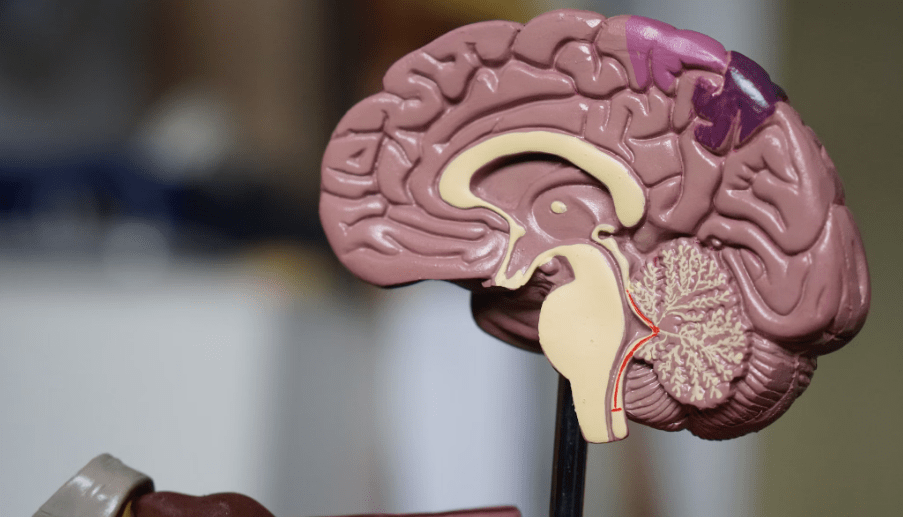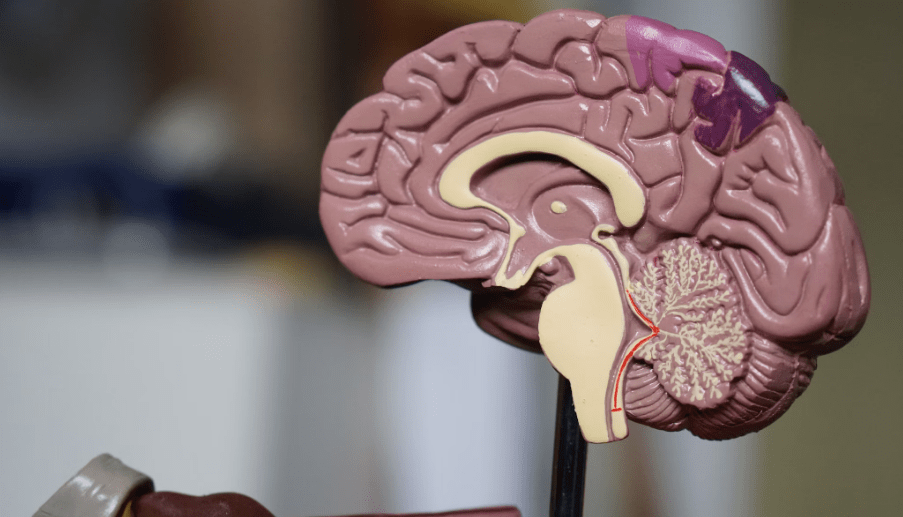
Part 4 —The Neuroscience of the Male Brain
In Part 1, I addressed the questions, “Men and Mental Health, What Are We Missing?” Part 2 focused on the way that “Mental Health Crises Are Putting Everyone at Risk.” In Part 3, I explored Gender-Specific Healing and Man Therapy. In Part 4, I will share recent research from leading neuroscientists.
Dr. Jill Bolte Taylor is one of the world’s leading neuroscientists. In 1996 she suffered a massive stroke in the left hemisphere of her brain. It took her many years to fully recover, but what she learned can help us all change our lives for the better. After her recovery she wrote a book about what she learned and gave a TED talk, “My Stroke of Insight.” It has now been viewed over 25 million times and remains one of the most popular TED talks ever.
Prior to the publication of her most recent book, Whole Brain Living: The Anatomy of Choice and the Four Characters That Drive Our Life, I had the privilege of interviewing Dr. Taylor.
Getting to Know Your Four Brain Characters
“There is now convincing neuroanatomical evidence of the existence of four brain characters,”
says Dr. Taylor.
“Surgically separating our two brain hemispheres has scientifically shown us that they are not simply two anatomically separate halves of a whole. Instead, the two halves of our brain house completely different character profiles that each exhibit unique wants, dreams, interests, and desires.”
Dr. Taylor found that in each brain hemisphere there is a thinking character and an emotional character.
“Neuroanatomically these four groups of cells make up the left-and-right thinking centers of our higher cerebral cortex, as well as our left-and-right emotional centers of our lower limbic system,” says Dr. Taylor.
She goes on to add:
“The better you know your Four Characters, the easier your life will become.”
Since all information comes into the brain first through our emotional centers, Dr. Taylor says we are all
“feeling beings who think, rather than thinking beings who feel.”
The philosopher, René Descartes’ dictum cogito, ergo sum, (Latin: “I think, therefore I am”), whose views have greatly influenced our culture, demonstrates the imbalance towards our thinking centers which have come to overshadow our emotional centers.
Character 1. This rational character in your left-brain thinking is amazingly gifted at creating order in the external world. This part of your brain defines what is right/wrong and what is good/bad based upon its moral compass. It is also our left-brain Character 1 that triggers our stress response since it is always alert to potential danger.
Dr. Taylor suggests we name each of our brain characters as a way to begin to become intimate with these unique characters within us. She calls her Character 1, Helen.
“She is Hell on wheels and gets things done,”
says Dr. Taylor.
I call my Character 1, J-DiJ for Just Do It, Jed. This character is action oriented, takes no prisoners. He is impatient and jumps to creating solutions, often before he gets all the facts. Rather than taking his time–On your mark, get set, go–he often “goes off” quickly, never needing to get ready or set. This can, and often does, cause problems in my life and relationships.
As you get to know your own Character 1, you will come up with your own name and learn his or her characteristics. Dr. Taylor lists some of the characteristics of Character 1 as follows:
- Organizes and categorizes everything.
- Divides people into us and them.
- Is protective of our people and suspicious of those people.
- Plans well.
- Respects authority.
- Critically judges right and wrong, good and bad.
- Interested in details and differences.
- Counts everything.
Character 2. The left-brain emotional character is preoccupied with one vital question: “Am I safe?” This is the core issue for any intimate relationship as well as our very survival through our long evolutionary history. Making a wrong decision was literally a life and death issue, particularly for women. Picking a partner who was not safe put women at risk of sudden death from predators, from males from other tribes who might cause harm to her or her children, as well as from a potentially untrustworthy partner. For men, the risk was also there, but the threat of death was less imminent.
Character 2 is often powered by a familiar feeling of unease that stems from a traumatized or out-of-control past. As a result, this Character 2 part of our brain may end up feeling either “less than” or “not worthy.” It can also bring up fears of abandonment. That’s why I call my Character 2, Aban.
A great deal of the conflicts I have had in relationships can be traced back to my fears that my safety and security needs were being threatened.
Dr. Taylor says some of the most important characteristics of Character 2 include:
- Gets angry and name-calling when upset.
- Feels guilty.
- Internalizes shame.
- Loves conditionally.
- Harbors negative self-judgments.
- Experiences a great deal of anxiety and worry.
- Egocentric.
- Blames others.
Where Characters 1 and 2, address issues of our past and future and how we can use things and people, our right brain Characters 3 and 4 are all about the present moment and how we can see the big picture, connect with others, and appreciate their uniqueness.
Character 3. The right-brain emotional, is our experiential self that seeks similarities rather than differences with other people. It wants to connect, explore, and go on adventures with others. The way the present moment feels is delicious, and sharing time, having fun, or deeply connecting through empathy can be gratifying for everyone.
I call my Character 3, Jeddy, the endearing name my wife, Carlin, calls me when we are feeling the most connected and playful. Jeddy is like a big joyful puppy dog. He is spontaneous, exuberant, unrestrained. He may unexpectedly jump into your lap and lick your face. He also can overwhelm you with his barks of delight and may even pee here and there when he is overly excited.
Dr. Taylor says some of the most important characteristics of Character 3 include:
- Forgiving.
- Awe-inspiring.
- Playful.
- Empathic.
- Creative.
- Joyful.
- Curious.
- Hopeful.
Character 4. The right-brain thinking character which exists as our most peaceful, open, and loving self. Our Character 4 is right here, right now, and completely invested in celebrating the gift of life with immense gratitude, acceptance, openness, and love. I call my Character 4, The Lovers. My Tarot deck says the card VI, Lovers, is
“symbolized by the conjoined male and female, is the law of union—oneness through the marriage of opposites.”
Along with the right-brain feeling Character 3, Character 4 is what Dr. Taylor experienced in all its magnificence when the left-side of her brain was incapacitated due to the brain hemorrhage.
“This is the part of our consciousness, right thinking brain that we share with one another and all other life,”
says Dr. Taylor.
“I see the brain cells underlying our Character 4 as the portal through which the energy of the universe enters into and fuels every cell of our body. It is the all-knowing intelligence from which we came, and it is how we incarnate the consciousness of the universe.”
Dr. Taylor says some of the most important characteristics of Character 4 include being:
- Aware: I am connected to all that is.
- Expansive: I am open to possibilities and value the big picture.
- Accepting: I am curious about what is and accept all of life’s experiences.
- Embracing change.
- Authentic.
- Generous of Spirit.
- Vulnerable.
- Connected: In the consciousness of the cosmic flow I embrace the timeless, all-knowing part of myself that is connected to all that is.
Dr. Taylor’s colleague, Iain McGilchrist, is a psychiatrist and author of The Master and His Emissary: The Divided Brain and the Making of the Modern World. Dr. McGilchrist says,
“We have more knowledge than ever, and yet the world is getting worse. Isn’t it as if a spell is driving our minds in the wrong direction? Aren’t we empowering machines while we are disempowering people? Isn’t the technocratic approach to nature, health, education, social relations and digital transformation giving counterproductive results, and taking us to a more dehumanizing world?”
We need to engage all four brain characters and both hemispheres of the brain, but as Dr. McGilchrist has shown, the right hemisphere must be in charge, and in our modern world we have gotten way out of balance.
“We behave like people who have right hemisphere damage that treats the world as a simple resource to be exploited.”
The hope for our collective future is that we recognize our imbalance, learn to let our right-brain characters 3 and 4 lead the way, and let our left-brain characters 1 and 2 do what they are supposed to do–become the emissary rather than trying to become the master. Getting our heads together may be the most important things humans can do if we want to return to being part of the community of life on planet Earth.
I have found it very helpful in sorting out a whole host of issues in my life to have what Dr. Taylor calls a “brain huddle” where I can hear from all four characters. When all my characters have been heard from, it is clear which character needs to take charge in a particular situation. Usually, my right hemisphere characters 3 and 4, have the big-picture wisdom and my left hemisphere characters 1 and 2, need to listen well and back up the decision that my right hemisphere characters, particularly Character 4 has clearly seen.
Since all of us come into being as a result of the sexual union between a male and a female, I picture my Character 4 being a partnership of a male and female character that captures the essence of all my male and female ancestors. This is truly a leadership team that can guide my future. I invite you to visit Dr. Taylor’s website here.
Stay tuned for more articles that will explore additional issues about the importance of men’s mental health. If you are not already receiving my free weekly newsletter you can sign up here. Coming soon, information on the new film, Sensitive Men Rising.
The post The Future of Men’s Mental Health appeared first on MenAlive.
